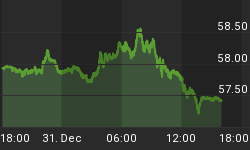Tesla’s Q4 2021 earnings saw stronger-than-predicted results, but it may be his science fiction promises that have nothing to do with EVs that keeps stock valuation so high. So why did Elon Musk try to distract from earnings to talk about his humanoid robot
Overall, Tesla's adjusted Q4 earnings per share came in at $2.54 versus the $2.36 predicted by analysts. Posted revenue for the quarter was $17.72 billion, compared to the $16.5 billion expected by analysts. Revenue rose 65% YoY in the quarter, while automotive revenue totaled $15.97 billion, up 71%.
In the production segment, the company said it increased overall production of all its vehicles combined by 70% versus Q4 of 2020. Models’ S and X production was down 19% year over year, while the Model 3 and Model Y were up by 79%.
Despite the impressive numbers considering the hardship the industry was and still is facing, Tesla shares dropped 11.6% as investors responded to Musk’s … digression. Over the past month, it’s down over 22%.
Contrary to the expectations, Musk said that the company has no plans to introduce its much expected Cybertruck this year and that it isn’t currently working on a $25,000 vehicle.
Instead, Musk described the company’s future humanoid robot, “Optimus”, as the “most important” product development this year.
“This, I think, has the potential to be more significant than the vehicle business over time,” Musk said during the call.
According to Musk, the first use of the Optimus robot, expected by the end of the year, would be at Tesla facilities, “kind of like moving parts around the factory or something like that”.
But in the future, Musk sees it helping solve labor shortages.
At the earning call, Musk stressed that the foundation of the economy is labor.
“So what happens if you don’t actually have a labor shortage? I’m not sure what an economy even means at that point. That’s what Optimus is about. So – very important.”
As economies recover, many are no longer struggling with high unemployment rates; rather, with a shortage of workers that has already been dubbed the “Great Resignation.” (According to the latest Bureau of Labor Statistics report, more than 4.3 million Americans quit their job in December 2021, following 4.5 million in November.)
Musk’s argument is that robots are increasingly used in factories, with a current average of 126 robots per 10,000 employees in the manufacturing industry.
According to the International Federation of Robotics that average is nearly double the number five years ago. A few years ago, PricewaterhouseCoopers reported that one-third of all human jobs will be lost to automation by the mid-2030s.
Initially, Musk first unveiled the robot during the company’s AI Day event last August, presented by a human in a robot suit dancing on stage.
Now, the 5-foot-8-inch, 125-pound machine is intended to take over dangerous, repetitive, physical tasks from humans. It will run on the same artificial intelligence system that powers Tesla’s driver-assistance technology.
But investors weren’t buying it. Though robotization has been progressing, particularly in the car industry since the 1960s, it might take a while for Musk’s idea to materialize, if it ever does. In early 2019, Musk said Tesla would have 1 million autonomous “robotaxis” on the road in 2020 and those still don’t exist.
Analyst David Trainer calls Musk “the slickest of slick hucksters”, noting in a January report cited by Fortune that “Musk's promises of riches from non-EV businesses are only getting more and more outlandish. Remember the Cybertruck, FSD, paradigm-shifting battery technology, solar panels, and now robots?" Investors are still waiting–and could wait forever–for real profits on any of that.
In the meantime, will Musk be able to distract investors further amid another massive recall, Tesla’s 9th recall since October 2021?

















